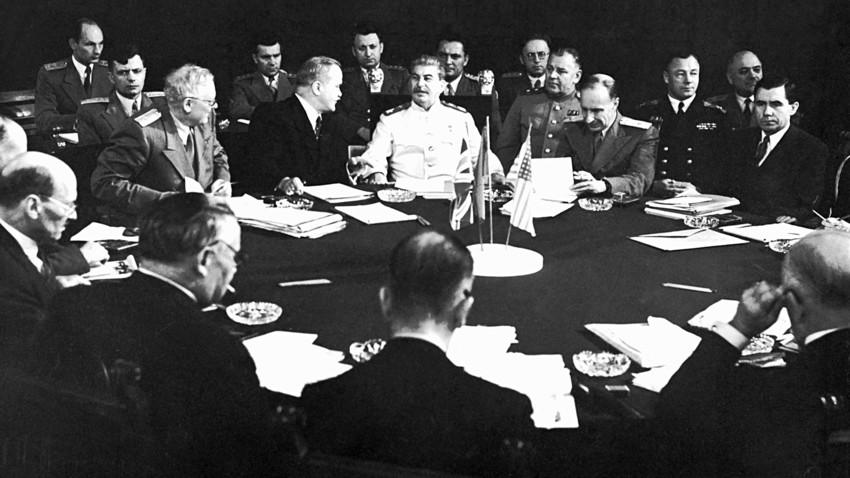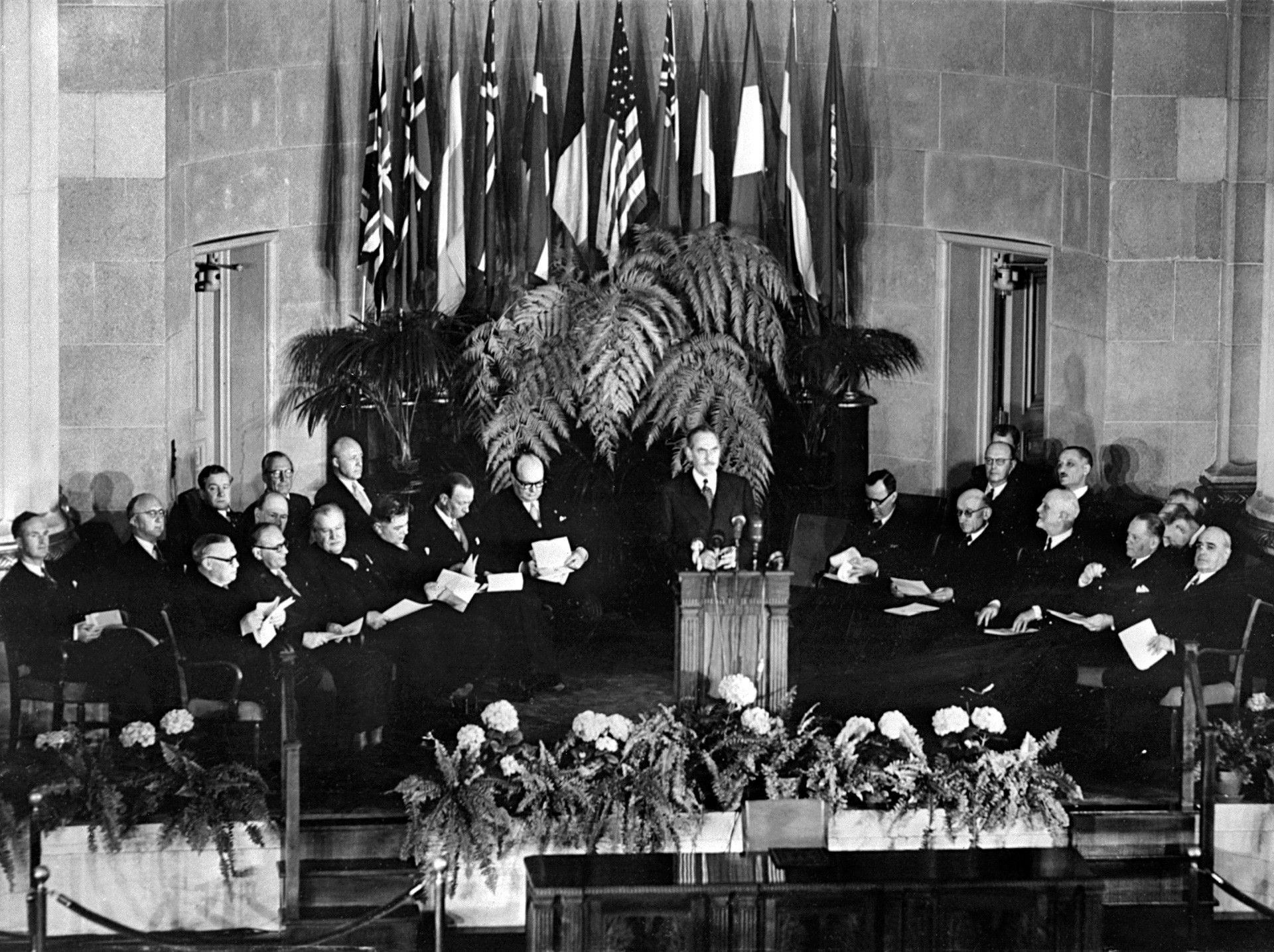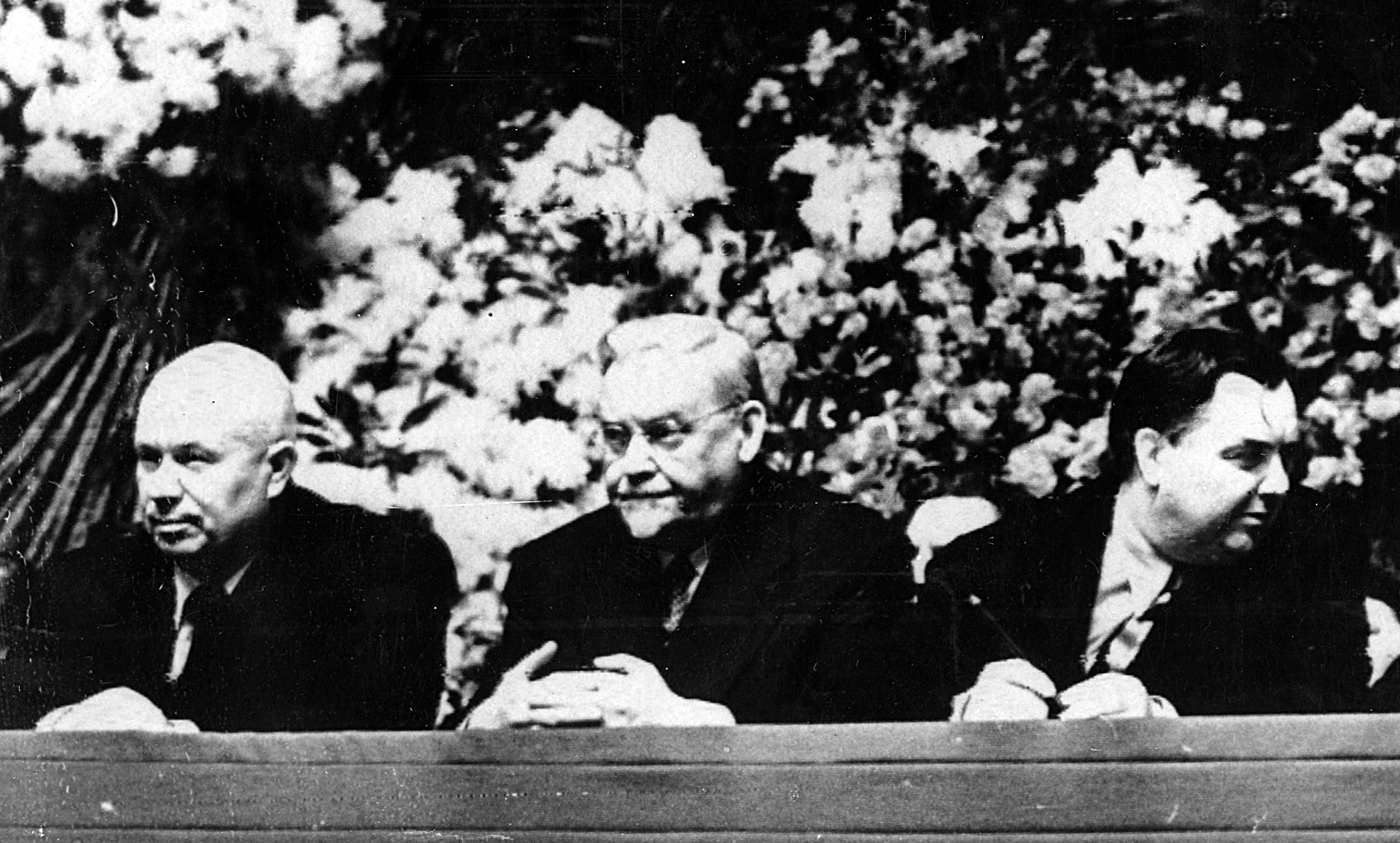'To avoid a new war': How Stalin pitched the idea of joining NATO

In 1949 Soviet Foreign Minister Andrey Vyshinsky (second to the left from Joseph Stalin) proposed to London to talk about the possibility of Moscow joining NATO
Evgeniy Khaldey/SputnikThe idea of Moscow joining NATO had already been floating in the Soviet capital at the time of the alliance’s creation in 1949. It was boosted by discussions in the British parliament whether it was necessary to invite Moscow to enter the new security organization. Although the Cold War had already started, the memory of the common struggle against Nazi Germany was still alive.
In this context, Soviet Foreign Minister Andrey Vyshinsky sent a note to London proposing to talk about the possibility of Moscow joining the security club. The Soviet idea, however, was met with silence.
What was in Stalin’s laughter?
The issue somewhat resurfaced again in 1952 at a meeting between the French ambassador to Moscow, Louis Joxe, and Soviet leader Joseph Stalin. The diplomat explained that according to French leader General de Gaulle, NATO was a peaceful organization whose existence did not contradict the UN Charter. Stalin laughed upon hearing

General view taken 4 April 1949 in Washington of the official signing ceremony creating the North Atlantic Treaty Organization
AFPAccording to historian Natalia Egorova, most probably this was
Soviet concerns
At the same time, Stalin thought that NATO was “undermining the UN” because the alliance had an “aggressive character” since it was a “closed military alignments of states” amidst the lack of a security arrangement in Europe.
That’s why when in 1954 Stalin’s successors -- a triumvirate consisting of Nikita Khrushchev, Georgy Malenkov
Moscow’s compromise
When pitching its official proposal to the West on March 31, 1954, the Soviet leadership did not want to stress those conditions too much. Kochkin cites a foreign ministry memo that stated: “The issue of our concerns … should be now framed in a very general form so as not to give to the governments of the three powers (Britain, France

Soviet politicians Nikita Khrushchev, Nikolai Bulganin and Georgy Malenkov
APThe proposal was compounded by another Soviet idea – signing a pan-European treaty on collective security, something that would remotely remind one today of contemporary OSCE security arrangements.
In order to dismiss possible criticism from the West, Moscow further softened its position, inviting the U.S. to join a proposed European treaty. Before it stated that Washington had no business in European affairs.
The threat to civilization
What drove the Soviet leadership to push for a European security treaty and consider possible NATO membership? Moscow’s motives can be inferred from a speech by Soviet Prime Minister Georgy Malenkov on March 12, 1954. He left aside traditional ideological clichés and warned about the threat of an end to human civilization as a result of a third world war that would inevitably be a nuclear conflict.
In May 1954, the West rejected Moscow’s proposal, alleging that Soviet membership would be incompatible with NATO’s democratic and defensive aims. The idea of the treaty was not welcomed either.
In the opinion of British historian Geoffrey Roberts, the Soviets then “were open … to serious discussions about the establishment of pan-European security structures – negotiations that might have led to an end of the Cold War.”
The scholar laments that the West did come up with “a more flexible response” to Soviet proposals.
If you are interested in Russia-NATO relations, you can read about the subject here.
If using any of Russia Beyond's content, partly or in full, always provide an active hyperlink to the original material.
Subscribe
to our newsletter!
Get the week's best stories straight to your inbox